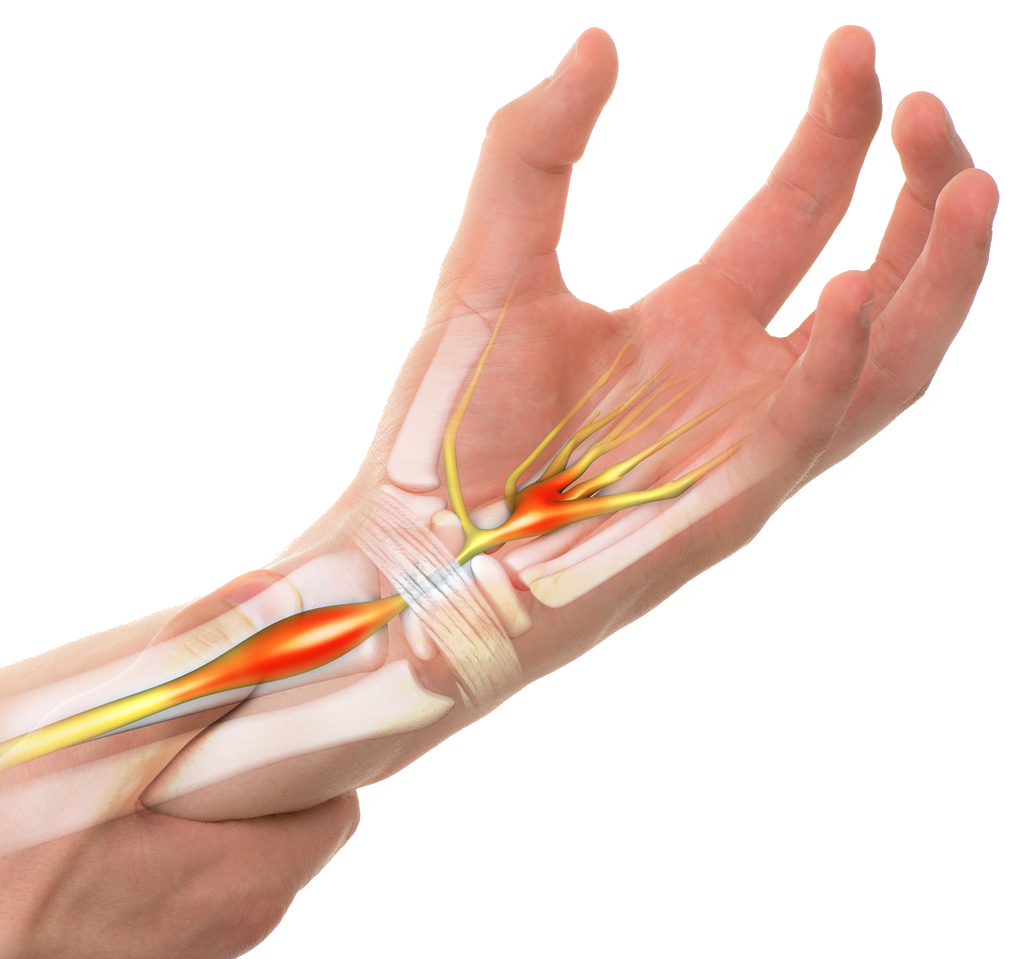Carpal tunnel syndrome

Carpal tunnel syndrome is a collection of symptoms which results from the compression (squeezing) of the median nerve as it passes across the wrist. The median nerve is a nerve that supplies some of the muscles in the hand as well as some of the feeling to the thumb, index finger and middle finger.
There are many factors which can lead to carpal tunnel syndrome. These include increased pressure on the wrist from the outside such as resting the wrist on a keyboard, certain repetitive activities, or a tight plaster, and increased pressure within the wrist such as swelling in pregnancy, hypothyroidism, obesity, arthritis, and smoking.
The commonest symptoms are pins and needles or numbness in some of the fingers in the hand, as well as pain which can be particularly troublesome at night, waking people from sleep.
Usually in the early stages, carpal tunnel syndrome can be treated effectively by wearing a splint at night which holds the wrist straight. This is effective as the nerve is compressed when the wrist is very flexed or very extended, something which people often do while asleep.
In those people where the night splint has not resolved the problem, or where there is continuous numbness or weakness, then surgery is usually advised.
Surgery aims to release the median nerve at the wrist, which is where the nerve is being squashed. The release is usually performed under local anaesthetic and involves making a small cut in the palm of the hand.
The role of physiotherapy after surgery is usually to maintain hand and wrist movement and ensure the scar is not too sensitive or lumpy.
Depending on the severity of symptoms, either wearing a night splint or surgery usually results in a full recovery. If you already have weakness and the muscles have wasted, while this may improve, you may not regain your full strength. If you had continuous numbness before the surgery then again this may not fully recover but it should not progress.